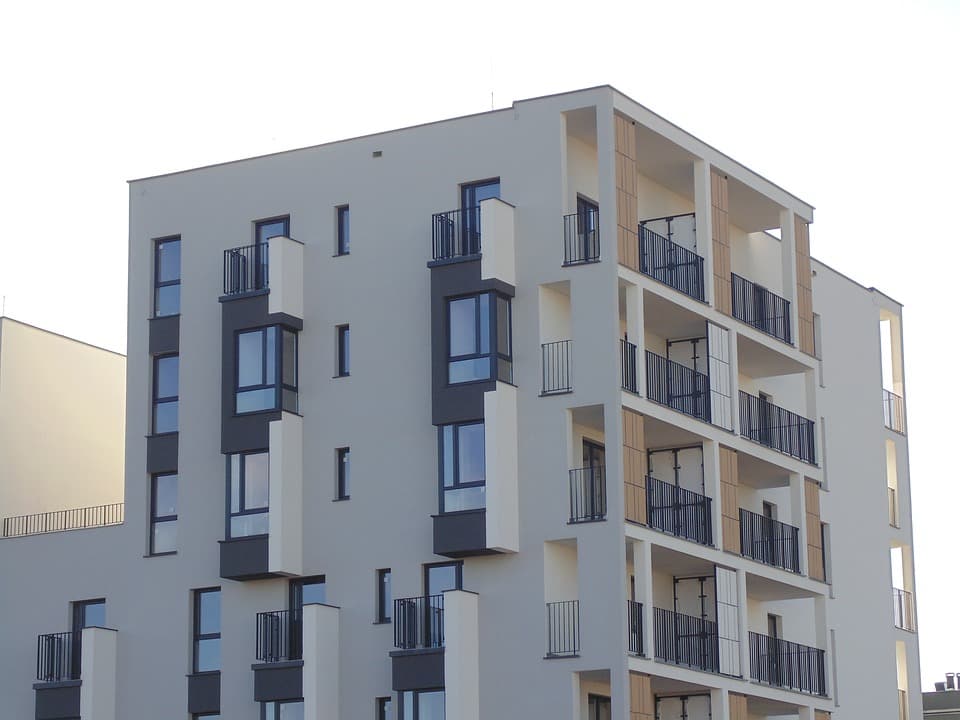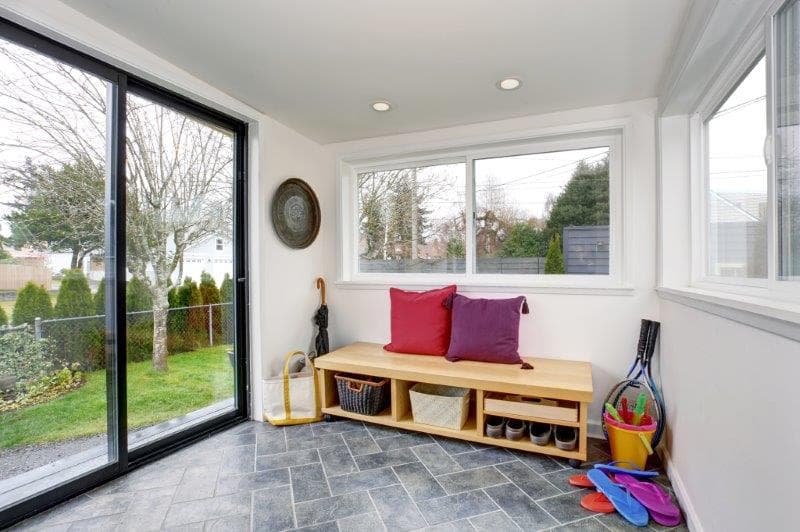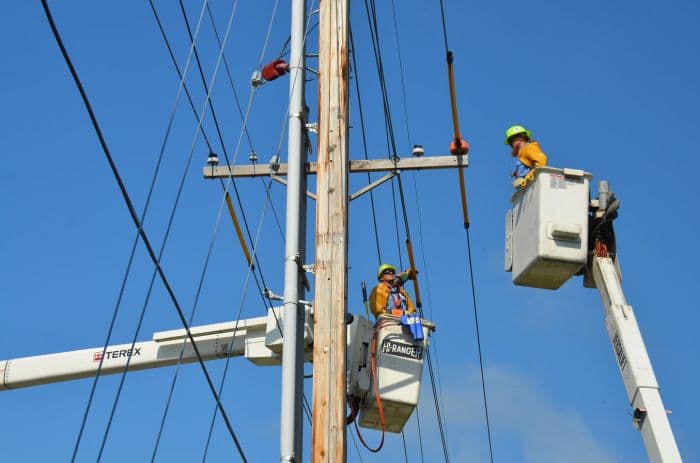Staircase Renovation - What Should You Know About It?
By Editorial Team
Updated on November 20, 2024

A staircase renovation project is essential to transforming not only the look of your foyer and interior but also its functionality and safety. A well-designed and renovated staircase is crucial to your home’s aesthetic appeal while adhering to mandatory safety standards.
What steps should you follow to install a new staircase? What are the advantages and disadvantages to consider before embarking on your project? How do you abide by safety and maintenance requirements to ensure the longevity of your renovated staircase? This article provides helpful tips to successfully go about your staircase renovation project.
How to Change or Modernize an Existing Staircase

Source: Canva
Advantages
Safety
Aging stairs can pose a serious safety risk, especially on account of a weakening, unstable base or poor lighting. Once renovated, your staircase will increase your home’s safety, meeting sale inspection requirements.
Property Value
A staircase renovation can significantly increase property value, improving its aesthetic appeal and providing enhanced functionality. A modern, well-designed staircase is an appealing factor to potential buyers, which can make all the difference during the sale of your house.
Aesthetic
Updating your staircase can transform the visual appeal of your home’s interior. Whether you choose to upgrade the material, add elegant wooden steps, or a contemporary railing, such improvements add flair to your space, reflecting your personal style.
Customizable
A staircase is a highly customizable feature that can be built according to a homeowner’s needs and preferences. You can integrate storage solutions, such as drawers or shelves below the steps, and select materials, colours, and finishes in tune with your style, allowing you to create a functional and aesthetic space.
Downsides
Costly
Renovating a staircase can turn into an expensive project upfront, especially if you opt for high-end materials or a customized design. The overall project cost can increase based on the necessary structural modification, ensuring safety and aesthetic appeal.
Disruptive
Staircase renovation work can be disruptive, especially if you can’t use your stairs for a prolonged period of time. It can impede access to certain areas of the house, complicating your daily routine.
Potentially Time-Consuming
Renovating a staircase can be a potentially time-consuming project, based on the complexity of the design and materials chosen. Timelines can be extended if structural adjustments are required or if tailored details are involved.
How to Install a New Staircase

Source: Canva
DIY Reno Tools and Equipment
Below is a list of tools and equipment needed to build a new staircase:
Safety goggles
Broom and shovel
Tape measure
Finishing nails
Drill and drill bits
Table saw fitted with a new or sharp blade
Quality mitre saw with finishing blade
Hammer
Level
Quality construction adhesive
Nail gun and air compressor
Carpet knife (if you’re removing carpeting)
Pry bar
Wood filler
Stair gauge
2-inch carpenter square
Bear in mind that you may need different tools based on the type of staircase you plan on building and the materials you want to use.
Building Steps
Below is an abridged, straightforward list of steps to install a new staircase. However, keep in mind that the steps detailed and their complexity can vary significantly based on the type of staircase you’re building.
Gather all necessary tools and materials:
Grab all necessary materials, including stair stringers, steps, risers, screws, and adhesives.Measure the total rise:
Use a tape measure to measure the total height from the bottom landing to the top of the staircase.
Divide the height by the number of risers to record the height of each riser.
Mark the stringers with every tread and riser.Cut the stringers:
Cut the stringers according to your measurements.
For floating stairs, make sure the cuts are done between the risers and treads.Secure the risers and treads:
Install the first two risers, then position the tread.
Secure them with wood screws and pre-drill the holes for the finishing nails.Carry on installation:
Repeat the process, adding two risers for every tread until you reach the top landing.Secure the railing:
Make sure there’s at least an inch and a half of clearance between the railing and the wall.
Secure the skirt board in the wall stud and connect the railing.
Key Terms
Staircase stringers: Vertical support boards holding the treads and risers.
Standard treads: Horizontal part of the stairs where one steps.
Risers: Vertical surface linking every tread, defining the front-facing part of the step.
Moulding/trim: Decorative feature that improves the look of the staircase, including quarter-round moulding, baseboard moulding, and cove moulding.
Building Code Requirements
To increase comfort when walking up and down the stairs, you have to ensure that the treads are big enough. As such, your feet shouldn’t be bigger than the stair nosing. In other words, avoid overhanging toes!
Also, the width of the tread shouldn’t be too deep nor too shallow, forcing the user to stride awkwardly. The distance between the treads shouldn’t be too spread out or too close.
In a nutshell, replacing stairs isn’t a walk in the park. It mandates knowing your local building code requirements and standards, ensuring a compliant build and sizing. The Régie du bâtiment du Québec has a list of requirements regarding an interior staircase:
The height of the guardrail must prevent an adult from failing over, whereas the clearance between each baluster should prevent a toddler from climbing through.
Floating staircases should be equipped with a guardrail and handrail that meet the height requirements and a lateral load-bearing capacity as per the building code.
In a flight of stairs, the tread height and treads must be the same. In a house, rectangular treads should be at least 21 cm (8.25 in.) and 35.5 cm (14 in.) at most.
The width of the landing shouldn’t be smaller than that of the width of the staircase.
Should you fail to comply with the guidelines provided, the city has the right to submit a notice of violation (fine) of upwards of $100. Therefore, hire a qualified contractor to build or install a standard-abiding staircase.
Regulation Highlights:
The APCHQ’s Construction Performance Guide (starting at page 206) compiles a list of several must-know regulations when carrying out renovation work. Below are just a few examples taken from said guide regarding staircase-building endeavours:
Stairs must have a headroom clearance that’s equal to or superior to the ones detailed in the current building code.
An interior stair tread deflection shouldn’t exceed ⅛ inch (3 mm) under a 200 lb (91 kg) load.
The risers and treads shouldn’t squeak as a result of poorly tightened or fixed joints. However, stair risers and treads are likely to emit a squeak when bearing a significant load.
Guardrail components must be assembled in such a way as to minimize gap joints. The gap between each guardrail component shouldn’t exceed 1/16 inch (2 mm).
An interior staircase guardrail must be built sturdily and affixed to the structural components as per the current building code.
How Much Does It Cost to Redo a Staircase? Estimated Remodel Budget

Source: Canva
Typically, one can manage with a budget between $4,000 and $10,000, including installation. When hiring a staircase contractor to carry out the work, make sure the finish and installation are included in the total cost when signing the contract.
Before embarking on a staircase building or installation project, establish a fixed budget to determine what type of stairs you want. The most sought-after staircase materials are hardwood, laminate, carpeting, ceramic tiles, and concrete, amongst others.
Amongst the other options available, there’s steel, wrought iron, and glass, while the last two are a lot more expensive, and thus less popular. Each material used can affect the overall construction cost.
Cost-Affecting Factors to Consider During Makeover
Stair Railing
The stair railing is what’s likely to have an impact on cost. The length of the staircase, including its complexity, will influence the total price. A straight-stair flight will be cheaper than a spiral staircase, for example.
Staircase Materials and Components
Also, since installing stair railings is mandatory, consider the number of balusters needed and the price per unit depending on the material selected.
Location
The staircase’s location in the dwelling will also affect the overall cost. If it’s in a high-foot-traffic area, opt for more aesthetically pleasing materials to blend the feature with the rest of the decor.
On the other hand, in low-foot-traffic areas, such as a basement- or attic-leading staircase, opt for more basic materials. The space available should also be considered. If you have to carry a lot of materials up and down your stairs, plan the clearance accordingly.
How to Maintain New Stairs
Maintenance Methods
Regular Cleanings
Regular staircase cleaning is essential for proper upkeep. Use a soft-bristled brush or vacuum to remove dust, and a damp rag for metal or glossy items to preserve their sheen and prevent dirt build-up.
Regular Inspections
Regular stair inspections are essential to detect any potential problems before they worsen. Check the steps, handrails, and balusters for any signs of wear, promptly repairing wobbly components, tightening screws, or sanding damaged wooden surfaces.
Metal Component Maintenance
Metal stairs and components, such as handrails, must be shielded from rust. Frequent cleanings with dedicated products can help preserve their appearance, whereas a coat of paint or sealant works as additional protection, especially for exterior structures.
Common Repairs
Squeaking
Applying a lubricant between the treads and risers or tightening loosened screws can often eliminate squeaking.
Wobbly Handrail
Tightening or replacing handrail screws and fasteners can improve stability and safety. Doing so is crucial to prevent potential accidents, especially on frequently used stairs.
When Should You Change Your Stairs?
Some signs are indicative that a staircase renovation is in the books. Amongst these, visible cracks, rotting, recurrent squeaking, or damaged parts can compromise the integrity and safety of your stairs.
Cracks
Cracks in your staircase’s wooden features are a sign of wear to monitor closely, whether found on the steps or risers. The deeper or longer the grooves, the more they weaken the wood, which can affect the staircase’s stability. Disregarding cracks can lead to significant structural damage, which can, in turn, compromise the staircase’s integrity.
Rotten Wood
Wood, albeit aesthetic and robust, is particularly vulnerable to water-caused damage. Whether resulting from flooding or regularly spilled liquids, moisture can cause wood to rot, weakening the staircase’s structure. A rotten wooden staircase can weaken, possibly compromising the structure. This type of damage shouldn’t be taken lightly and requires a professional intervention.
Squeaky Stairs
Constantly squeaking stairs can be a telltale sign of an underlying issue. Such noises result from loosened screws, wearing joints, or more serious structural problems. Disregarding squeaking can only aggravate the situation. Having your stairs inspected as soon as possible will help determine the cause of the noise and prevent further damage. Although squeaking can seem like a minor issue, it can be quite annoying on a daily basis and indicate that steps and risers aren’t perfectly fastened, creating a gap leading to that unpleasant noise. If the problem persists, repairing or replacing the entire staircase might be worth looking into.
Broken Parts
Broken parts, whether it be the treads, handrails, or balusters, compromise the staircase’s safety. It’s important to repair or replace damaged components to prevent accidents.
How Long Does It Take to Renovate a Staircase?
A staircase renovation project timeline will hinge on several factors, such as design complexity, materials used, and the extent of the structural modifications ordered. A renovation can take 8 hours to a few weeks. Moreover, contractor availability and any unforeseen complications can hinder your project timeline.
Looking for more information about the different stair models for your home? Check out our article 7 Unique Staircase Designs for Your Home.
FAQ
What is the cheapest way to renovate stairs?
One of the most cost-effective ways to carry out a staircase renovation project is painting over your old stairs, and revamping the design with a new, aesthetic colour. Another way to go about switching things up a bit is removing the outdated carpet or runner, and laying a new one, making it the focal point of the space. Lastly, changing the railings can be a cheap way to modernize a part of the stairs.
What is the trend in stairs for 2024—oak, modern, glass, open?
This year, the biggest trending staircase designs include the barely there look (open), mixed materials (steel and timber designs), and enclosed contemporary stairs.
Looking for something else?
Related articles
The latest industry news, interviews, technologies, and resources.

Editorial Team
•07 Nov 2023
At first sight, the bathroom might appear to be a rather dull and boring space, an afterthought to the overall home. However, humans spend a significant amount of time in their bathrooms, and the style and beauty of the individual should be reflected in the floors, ceilings and walls of every room!

Cynthia Pigeon
•07 Nov 2023
Are you thinking about purchasing an air exchanger to improve the comfort level in your home? If you want to get the most out of this device, installation is key.

Editorial Team
•07 Nov 2023
Owning a rental apartment is not without challenges to overcome, as it comes with a number of obligations and responsibilities, which aren’t easy to maintain.

Editorial Team
•07 Nov 2023
With so many rooms in a home and plenty of decor choices to take care of, the entryway is one area that’s sure to be overlooked time and time again. It’s only natural to underestimate this space, but it’s important to remember that this is the first area of the home guests will encounter as well as the one which will greet you at the end of a long day.

Editorial Team
•08 Oct 2025
Are you thinking about becoming an electrician but hesitant about moving forward with this adventure for one reason or another? Of course, learning a trade involves a lot more than simply sitting in a classroom, and thus, we’re here to offer a glimpse of what this exciting job will hold for you. This includes information about the prospects it offers.